Parents will FALL in love with this art lesson! Students design delightful autumn leaves embracing the elements of line and texture. This project covers Common Core Standards for Science for grades K-2 which can be found at the end of the lesson.
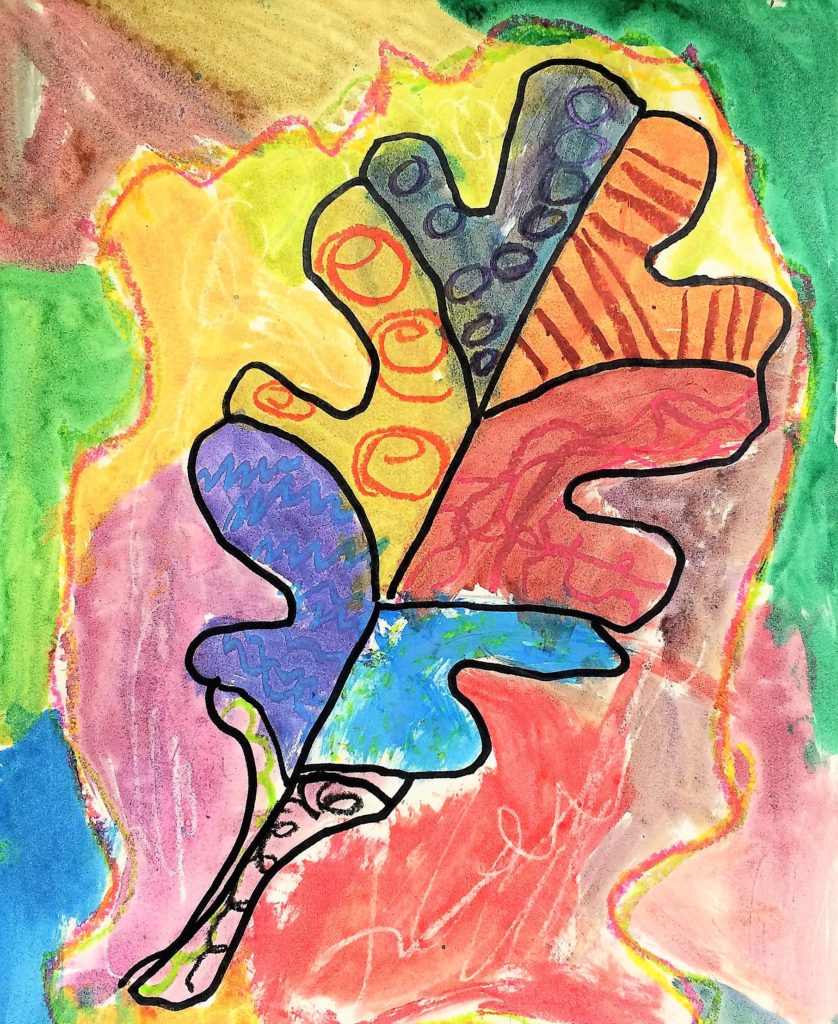
Grade Level
Kindergarten, 1st, and 2nd Grade – The examples in this lesson are made by 1st graders.
Objective
Texture Leaves Art Lesson – Students will design leaves swirling in the wind using line elements.
Time
3 – 60 min lessons
Materials
- Pencils
- Oil pastels – Pentel Arts Oil Pastels, 50 Color Set (PHN-50)
- 9×12 Watercolor paper – Canson (100510941) XL Series Watercolor Pad, 9″ x 12″, Fold-Over Cover, 30 Sheets
- Brushes – Acrylic Paint Brush Set, 1 Packs / 10 pcs Nylon Hair Brushes for All Purpose Oil Watercolor Painting Artist Professional Kits
- Liquid Water Colors – Sargent Art 22-6010 10-Count 8-Ounce Watercolor Magic Set
- Or this mini version for homeschooling – Sargent Art 22-6210 10-Count 4-Ounce Watercolor Magic
- Black Sharpie Marker – SHARPIE Permanent Markers, Fine Point, Black, 2 Ct
- Kleenex for blotting paint
- Template – printed cut and traced onto watercolor paper: Click Here
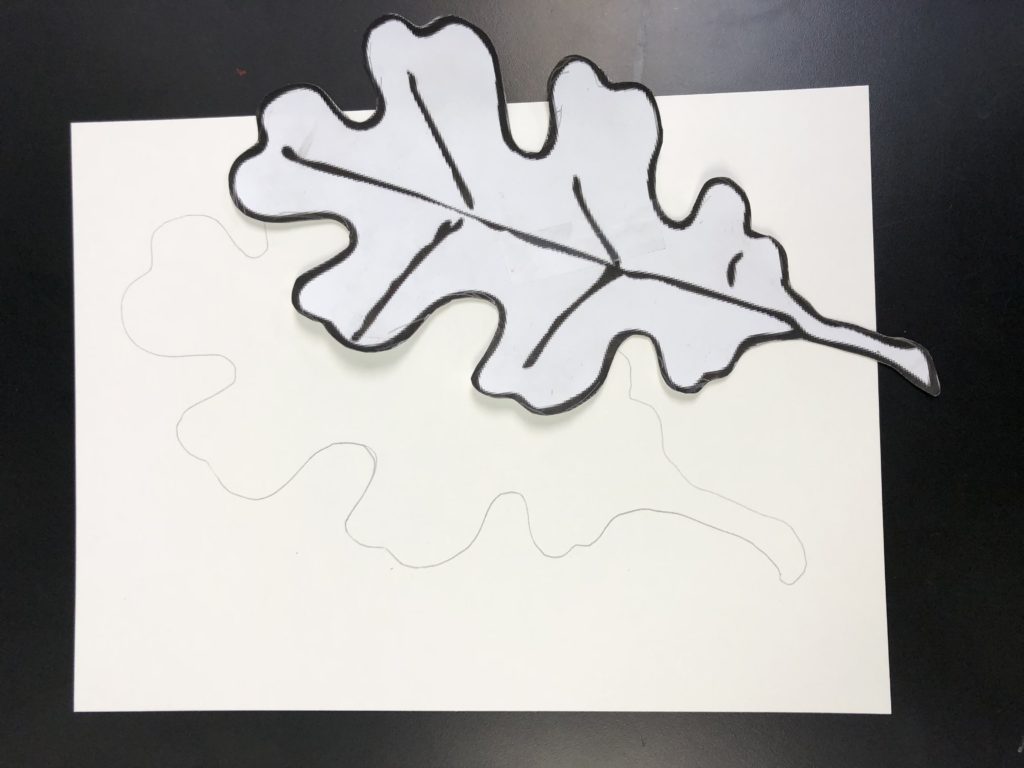
Inspiration/Artist
I was inspired to make this project after I saw this idea: Click Here
Instruction with Questions
Day 1
Review what students know about Line, Texture, and Patterns. Define each one with the students with examples.
Line:
An identifiable path, created by a point moving in space. It is one-dimensional and can vary in width, direction, and length. Lines often define the edges of a form. Lines can be horizontal, vertical, or diagonal, straight or curved, thick or thin.
Texture:
The way an object feels to the touch or looks as it may feel if it were touched.
Pattern:
Repetition refers to one object or shape repeated; a combination of elements or shapes repeated in a recurring and regular arrangement
Next, show students the following online videos:
The Lines Song | Art Songs | Scratch Garden
Read Aloud – Lines That Wiggle By: Candace Whitman
Line defined – From Goodbye-Art Academy: Click here
Texture defined – From Goodbye-Art Academy: Click here
And just for fun – Even my older students love this – Sesame Street: Abby Cadabby teaches Josh Gad about Texture: Click Here
Day 2
The directions on the website https://artprojectsforkids.org/leaf-pattern-art/ are totally sufficient. Here is how I taught this Texture Leaves Art Lesson.
Review types of “line elements” that students can use in their artwork. Have students stand up and put one finger in the air. They raise their hand and tell me a type of line and the whole class draws that line in the air.
Do a demonstration on the board for how a finished leaf will look. Use different colors and shapes/lines in every “area”.
Pass out the leaf that you pre-traced. Have students use a sharpie marker and trace over all pencil lines.
Day 3
Show students another example of a finished leaf. Put examples on the board of a variety of line elements for them to choose from.
Next, do a guided drawing. Have a variety of colorful oil pastels or crayons for them to choose from. Ask them to do one area of their leaf at a time choosing their own colors and shapes/lines. My favorite is the largest example below where Sophia created chocolate chip cookies in one area.
After their areas are complete, ask them to create two or three outlines around their leaf. Finally, have students add additional leaf drawings around their large leaf.
Day 4
Today is the painting day. A different color in every area and a variety of colors around the outside of the leaf. Voila!
Here are some finished pieces for this Texture Leaves Art Lesson!
Common Core Standards
Kindergarten – Science – Earth Sciences
3. Earth is composed of land, air, and water.
b. Students know changes in weather occur from day to day and across seasons, affecting Earth and its inhabitants.
1st Grade – Science – Earth Science
3. Weather can be observed, measured, and described.
b. Students know that the weather changes from day to day, but that trends in temperature or of rain (or snow) tend to be predictable during a season.
2nd Grade – Science – Physical Sciences
1. The motion of objects can be observed and measured.
e. Students know objects fall to the ground, unless something holds them up.

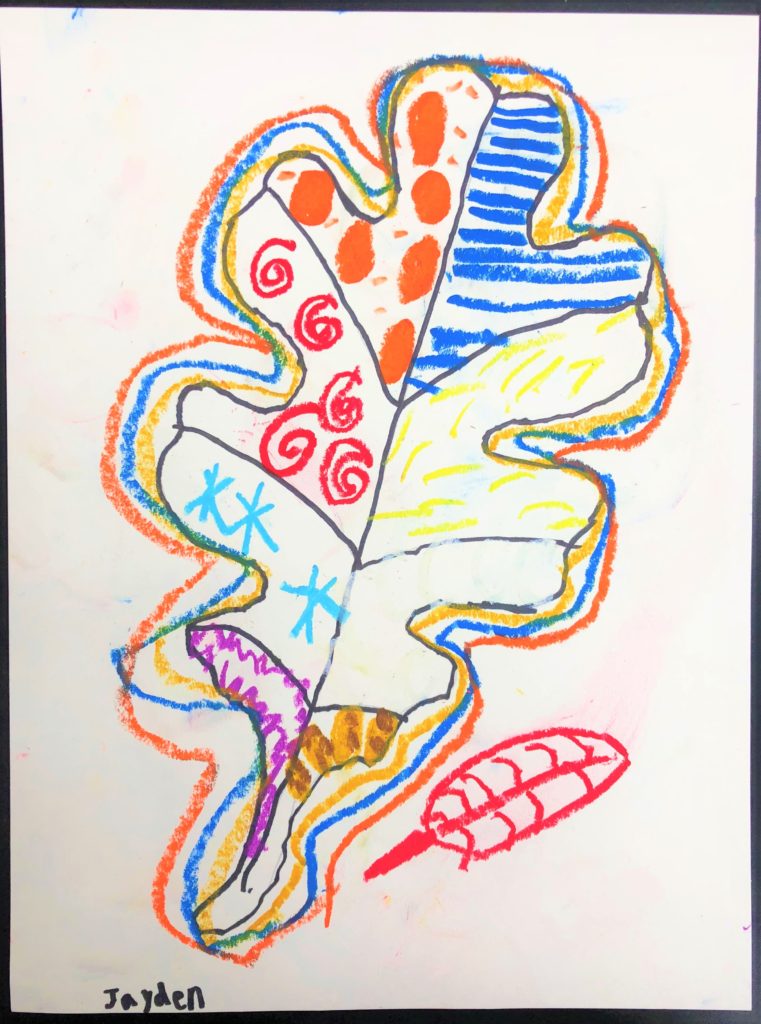

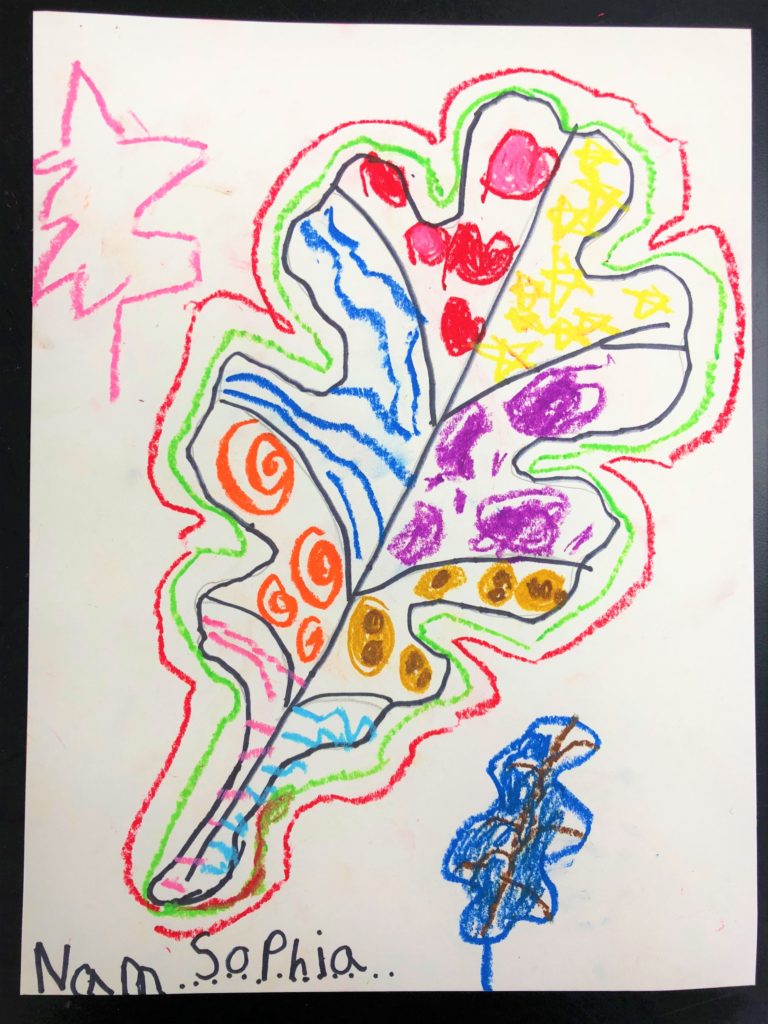
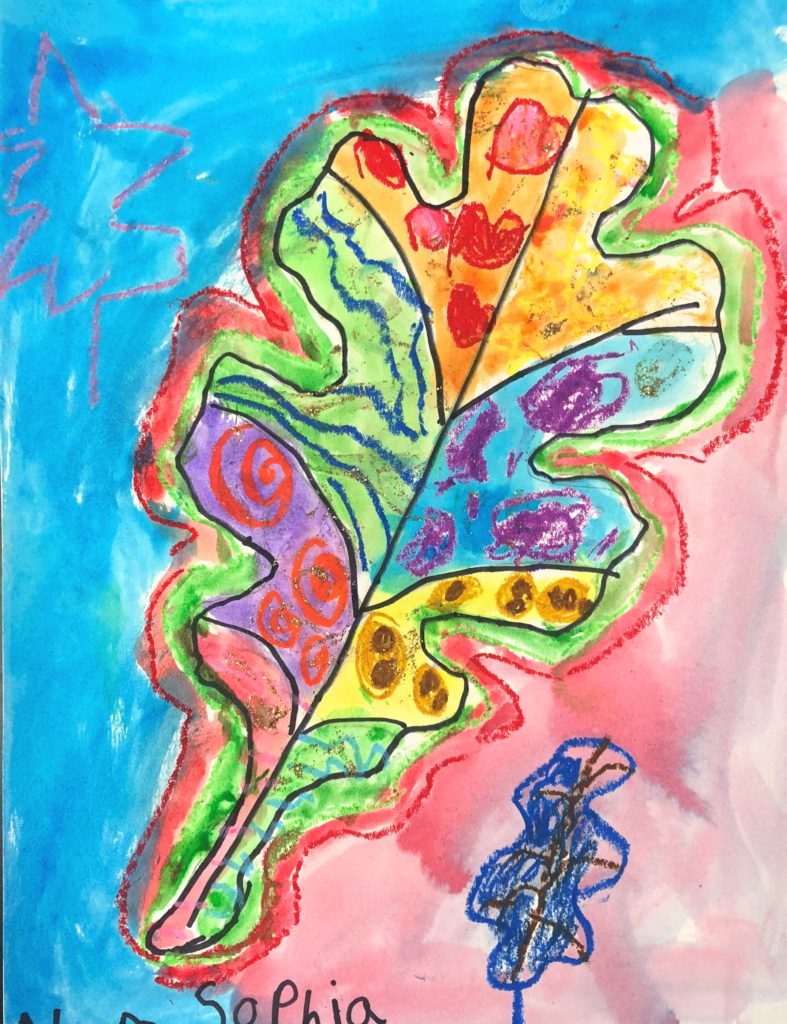
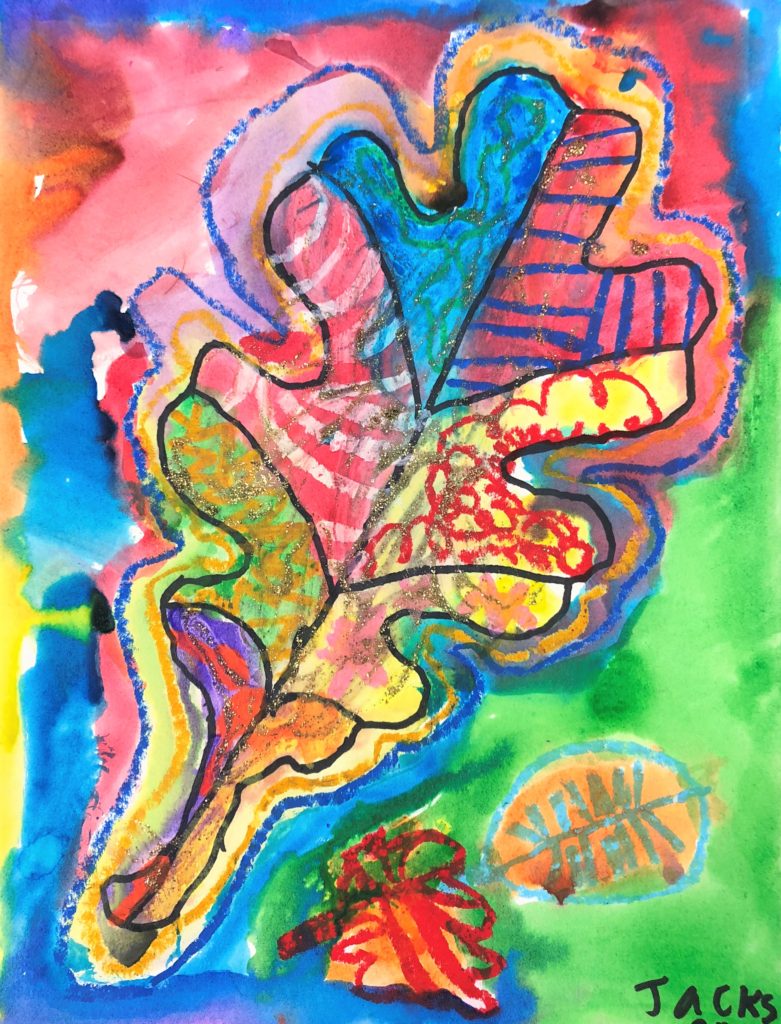
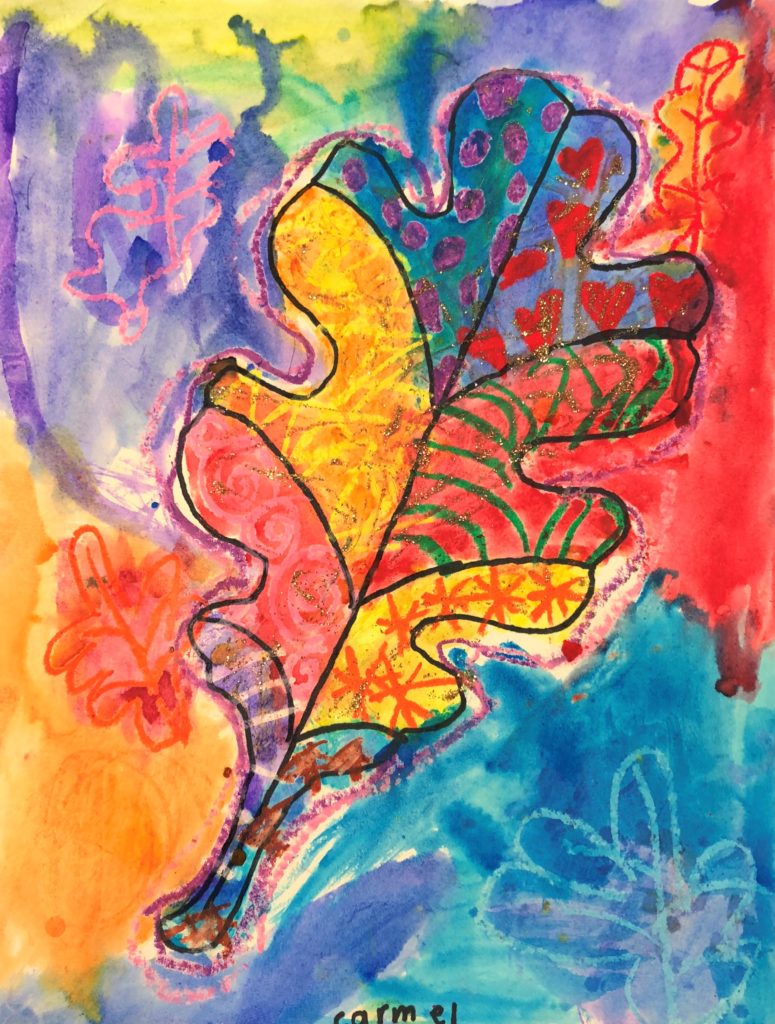

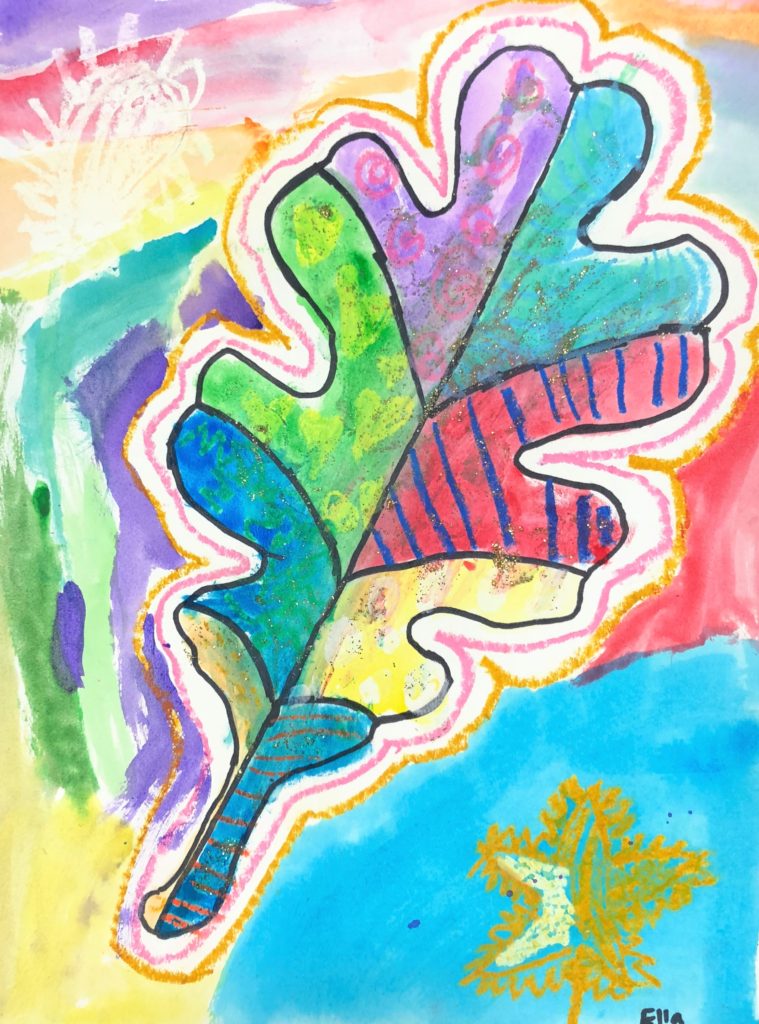
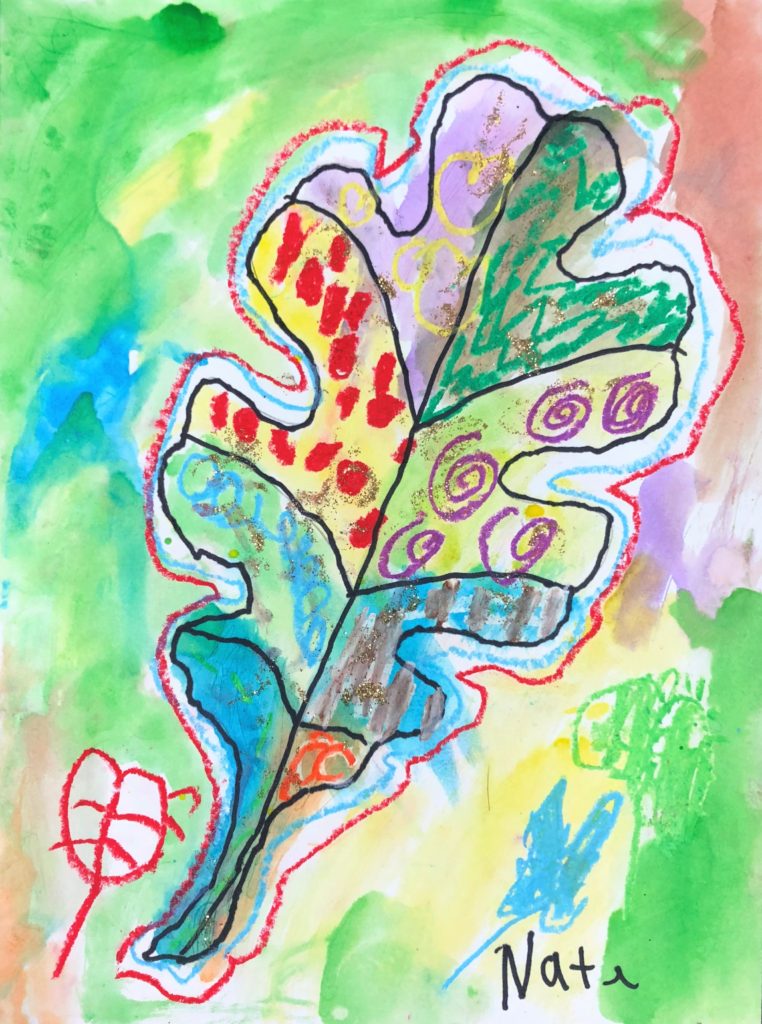
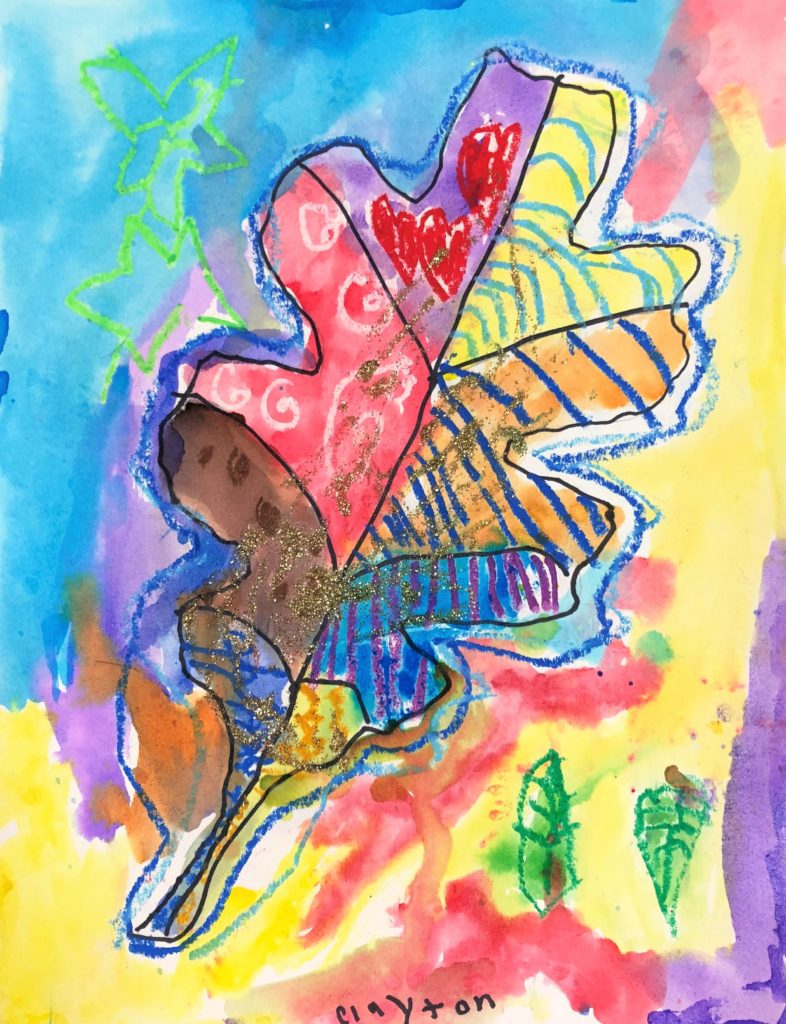
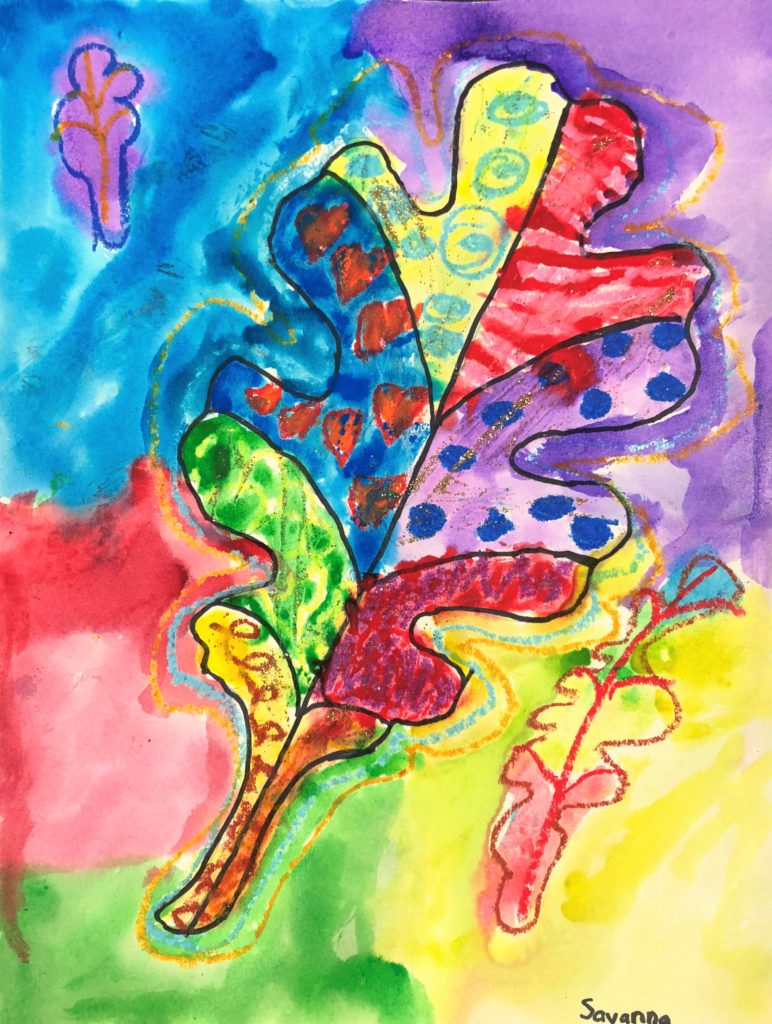
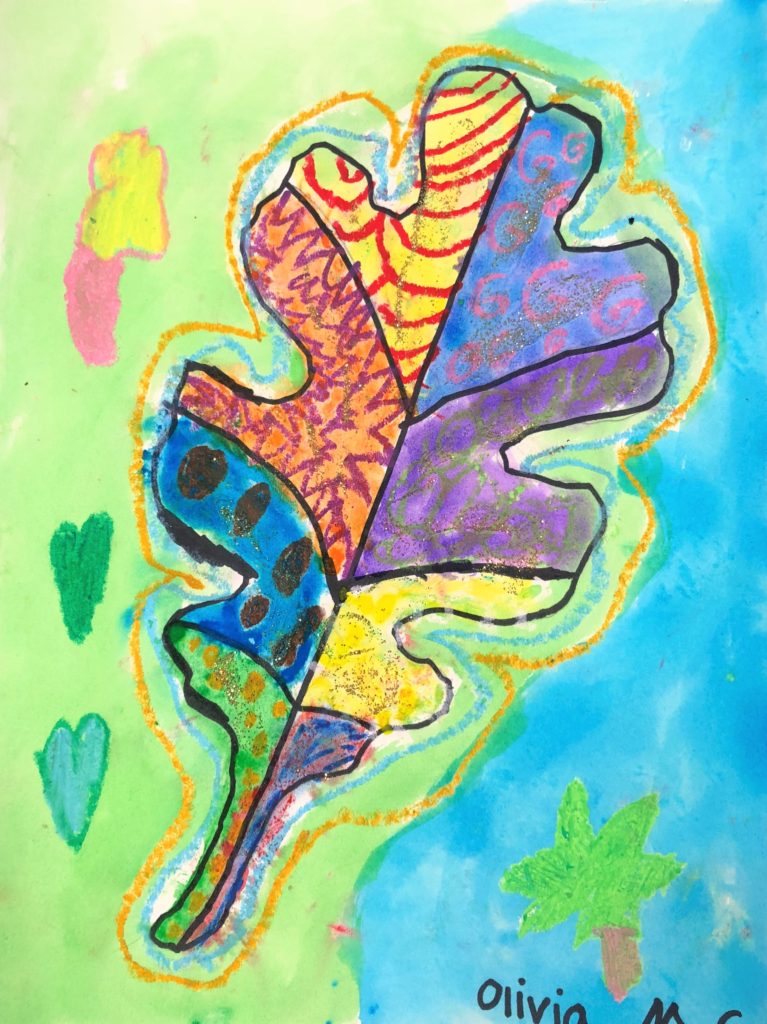
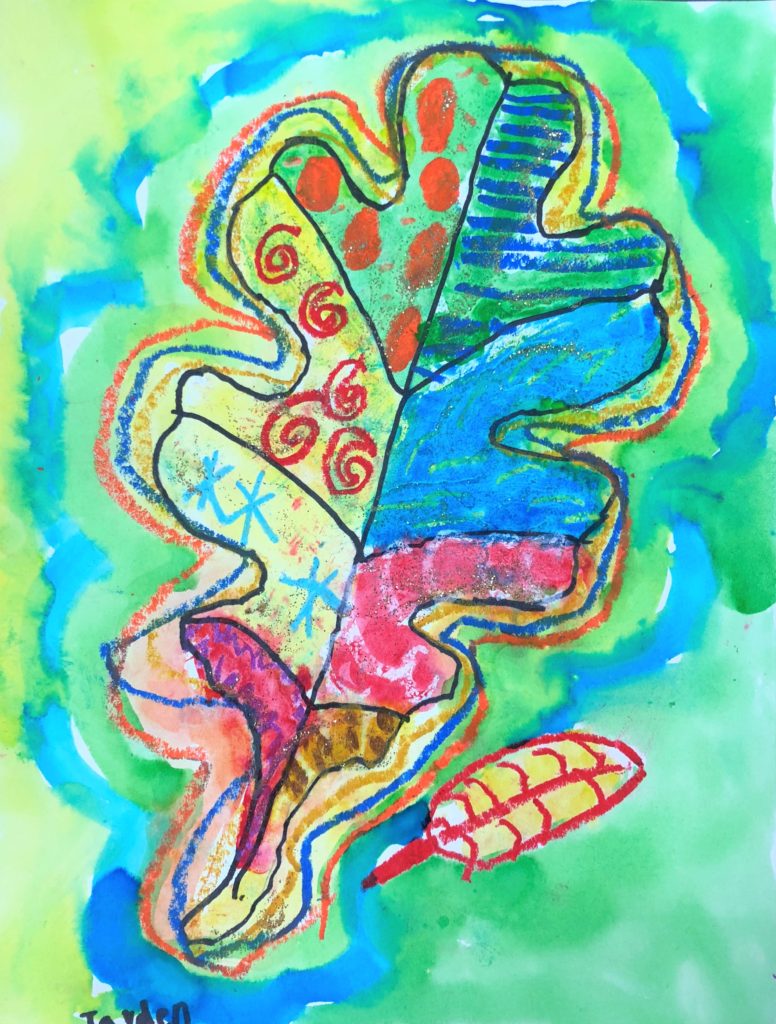


Leave a Reply